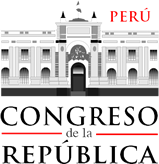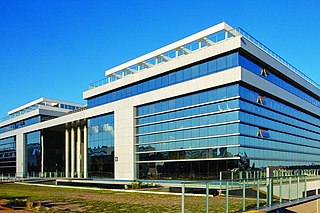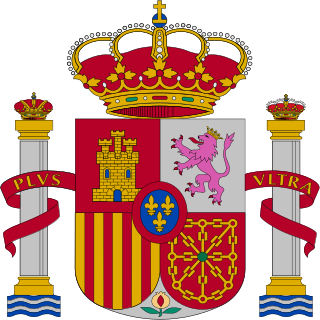
The politics of Ecuador are multi-party. The central government polity is a quadrennially elected presidential, unicameral representative democracy. The President of Ecuador is head of state and head of the army on a multi-party system, and leads a cabinet with further executive power. Legislative power is not limited to the National Assembly, as it may to a lesser degree be exercised by the executive which consists of the President convening an appointed executive cabinet. Subsequent acts of the National Assembly are supreme over Executive Orders where sufficient votes have been cast by the legislators. The judiciary is independent of the executive and the legislature. Ecuador is also considered a constitutional republic.

The president of Peru, officially the constitutional president of the Republic of Peru, is the head of state and head of government of Peru. The president is the head of the executive branch and is the supreme head of the Armed Forces and National Police of Peru. The office of president corresponds to the highest magistracy in the country, making the president the highest-ranking public official in Peru.

The Supreme Justice Tribunal is the highest court of law in the Bolivarian Republic of Venezuela and is the head of the judicial branch. As the independence of the Venezuelan judiciary under the regime of Nicolás Maduro is questioned, there have recently been many disputes as to whether this court is legitimate.

The Congress of the Republic of Peru is the unicameral body that assumes legislative power in Peru. Due to broadly interpreted impeachment wording in the Constitution of Peru, the President of Peru can be removed by Congress without cause, effectively making the legislature more powerful than the executive branch. Following a ruling in February 2023 by the Constitutional Court of Peru, the body tasked with interpreting the Constitution of Peru and whose members are directly chosen by Congress, judicial oversight of the legislative body was also removed by the court, essentially giving Congress absolute control of Peru's government. Since the 2021 Peruvian general election, right wing parties held a majority in the legislature. The largest represented leftist party in Congress, Free Peru, has subsequently aligned itself with conservative and Fujimorists parties within Congress due to their institutional power.

The Supreme Court of Justice is the highest court of law in Portugal without prejudice to the jurisdiction of the Constitutional Court.

The National Jury of Elections of is an autonomous constitutional organ, headquartered in Lima, which serves as Peru's electoral court. Its goal is to oversee the legality of electoral processes, guaranteeing the respect for the population's will. Thus, it is the entity in charge of proclaiming the official electoral results and awarding recognitions or credentials to the elected authorities. Furthermore, it passes resolutions to regulate the electoral dispositions.

The Supreme Court is the highest court in the Kingdom of Spain. The court has original jurisdiction over cases against high-ranking officials of the Kingdom and over cases regarding the legalization of political parties. It also has ultimate appellate jurisdiction over all cases. The Court has the power of judicial review, except for the judicial revision on constitutional matters, reserved to the Constitutional Court.

The National Council of Justice (CNJ) is an administrative and oversight organ of the Brazilian Judiciary created by constitutional amendment in 2004 as a part of judicial reform. Among its responsibilities are ensuring that the judicial system remains autonomous, conducting disciplinary proceedings against members of the Judiciary, and compiling and publishing statistics on the Brazilian court system. The Council has nationwide jurisdiction over all courts except the Supreme Federal Court, but makes no rulings on cases and does not review judgements of other courts. Its fifteen members are chosen by the Supreme Federal Court for two-year terms.

The Supreme Court of Costa Rica is the court of greater hierarchy of Law and Justice in Costa Rica.
The Constitution of the Philippines is the supreme law of the Philippines. Its final draft was completed by the Constitutional Commission on October 12, 1986, and ratified by a nationwide plebiscite on February 2, 1987. The Constitution remains unamended to this day.

The Judiciary of Spain consists of Courts and Tribunals, composed of judges and magistrates (Justices), who have the power to administer justice in the name of the King of Spain.

The Judiciary of Brazil is the group of public entities designated by the Brazilian constitution to carry out the country's judicial functions.

A constitutional referendum on a number of changes to the constitution was held in Turkey on 12 September 2010. The results showed the majority supported the constitutional amendments, with 58% in favour and 42% against. The changes were aimed at bringing the constitution into compliance with European Union standards. Supporters of Turkish EU membership hope constitutional reform will facilitate the membership process.

The politics of France take place within the framework of a semi-presidential system determined by the French Constitution of the French Fifth Republic. The nation declares itself to be an "indivisible, secular, democratic, and social Republic". The constitution provides for a separation of powers and proclaims France's "attachment to the Rights of Man and the principles of National Sovereignty as defined by the Declaration of 1789".

The Constitution of Costa Rica is the supreme law of Costa Rica. At the end of the 1948 Costa Rican Civil War, José Figueres Ferrer oversaw the Costa Rican Constitutional Assembly, which drafted the document. It was approved on 1949 November 7. Several older constitutions had been in effect starting from 1812, with the most recent former constitution ratified in 1871. The Costa Rican Constitution is remarkable in that in its Article 12 abolished the Costa Rican military, making it the second nation after Japan to do so by law. Another unusual clause is an amendment asserting the right to live in a healthy natural environment.
A constitutional referendum was held in Peru on 9 December 2018, alongside the second round of gubernatorial elections. Proposed by President Martín Vizcarra, the referendum aimed to tackle widespread political corruption in the country. The referendum sought public approval for four constitutional reforms: restructuring the National Council of the Magistracy, regulating political party financing, prohibiting the immediate re-election of parliamentarians, and reinstating a bicameral parliament.
César Hinostroza is a Peruvian judge, lawyer, and fugitive who was a judge in the Peruvian Supreme Court from 2 January 2017 until his escape on July 11, 2018, in the midst of the political crisis in Peru. He is known for being involved in the CNM Audios scandal, a corruption scandal which led to his escape. When he escaped on 17 October, he was arrested following a warrant by Interpol, but was provisionally released on April 11, 2019.

The Cuellos Blancos scandal or the CNM Audios scandal is a judicial scandal caused by the revelation of audio recordings of judges and their staff, with the most notable individual being Associative Justice of the Supreme Court of Peru César Hinostroza, allegedly discussing bribes and reducing criminal penalties. These judges were part of the National Council of Magistracy. The scandal was revealed by an initiative led by the investigative journalism website IDL-Reporteros, which ultimately collected over 63,000 audio recordings that reportedly unveiled one of the largest corruption networks in Peru's judicial history. Following the scandal, the CNM would be restructured into the National Board of Justice (JNJ).

Liz Patricia Benavides Vargas is a Peruvian lawyer. On June 20, 2022, she was elected as Attorney General of Peru and was removed from her position on 7 December 2023 as a result of the Peruvian Public Ministry controversy.

An investigation surrounding the Public Ministry of Peru, known as Operation Valkyrie V resulted with a controversy surrounding the Attorney General of Peru, Patricia Benavides, who was alleged to head a criminal organization. The scandal revolved around alleged irregularities with the decisions of electing the Ombudsman of Peru Josué Gutiérrez Cóndor, dismissing former attorney general Zoraida Ávalos and attempts to remove the members of the National Board of Justice (JNJ), all in reported attempts for Benavides to main control of the Public Ministry by nominating allies in judicial positions.


















